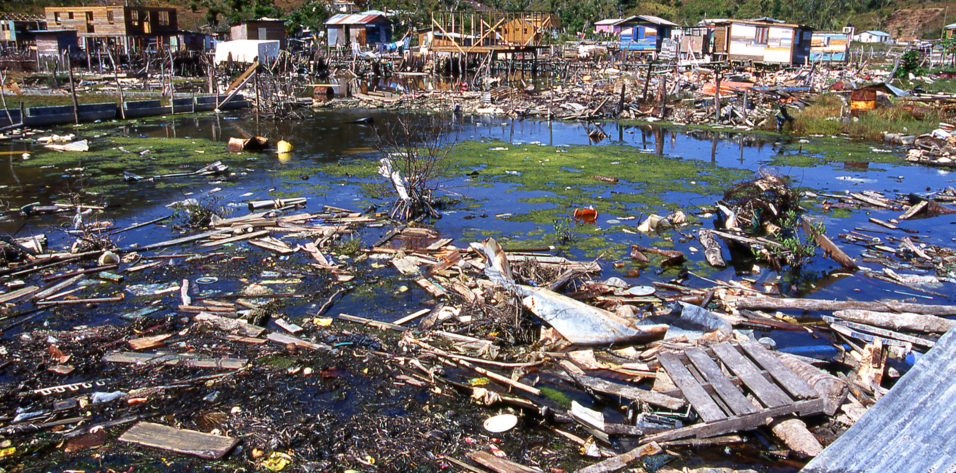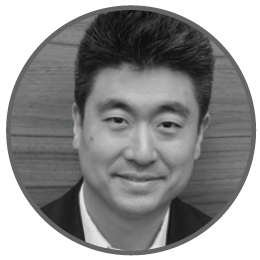
Imagine that you just finished your second year of residency. You’ve studied the AAO’s Basic and Clinical Science Course religiously and tried to absorb as much information from your attendings as possible. You’ve learned how to run a resident clinic and stayed up late on many nights managing patients on call. But by this point, you’ve performed only a limited number of procedures and you eagerly await the chance to raise your surgical experience to the next level.
Suddenly, a literal deluge hits you like a tidal wave. Most of the population of your city flees overnight, and, when all is said and done, more than half of the roughly 500,000 people who fled still haven’t returned. Many lost all of their worldly possessions—including their homes—and some even lost their lives.
Hurricane Katrina struck in August 2005 and devastated the lives of many people (Figures 1–3). When I think about it, my own loss was miniscule in comparison, and I’m sure my colleagues at that time, the other residents at the LSU Eye Center and Tulane University, have stories of their own harrowing experiences perhaps far worse than mine. But this is my story.
SOOTHSAYER
When I was in medical school at Albany Medical College, I shared my interest in the LSU ophthalmology program with my mentor, the chair of pediatrics, David Clark, MD. He told me in graphic detail how New Orleans is sitting inside a bowl, below sea level. If a catastrophic flood ever struck New Orleans, he said, the whole city would be under water. His words were, “It’s a ticking time bomb.” At the time, I thought to myself, “What are the chances…?”
Recalling his words today sends chills up my spine. I never imagined that, in those 5 short years I spent in New Orleans, I would be a witness to one of the worst natural disasters ever to hit the city.
EVERYTHING WILL BE FINE … RIGHT?
When Katrina struck the Louisiana Gulf Coast, I was rotating through the Leonard J. Chabert Medical Center in Houma, which is southwest of New Orleans. Even though Houma is closer to the Gulf of Mexico than the Crescent City, we lost power only for 2 days and didn’t experience major flooding in the areas around the medical center.
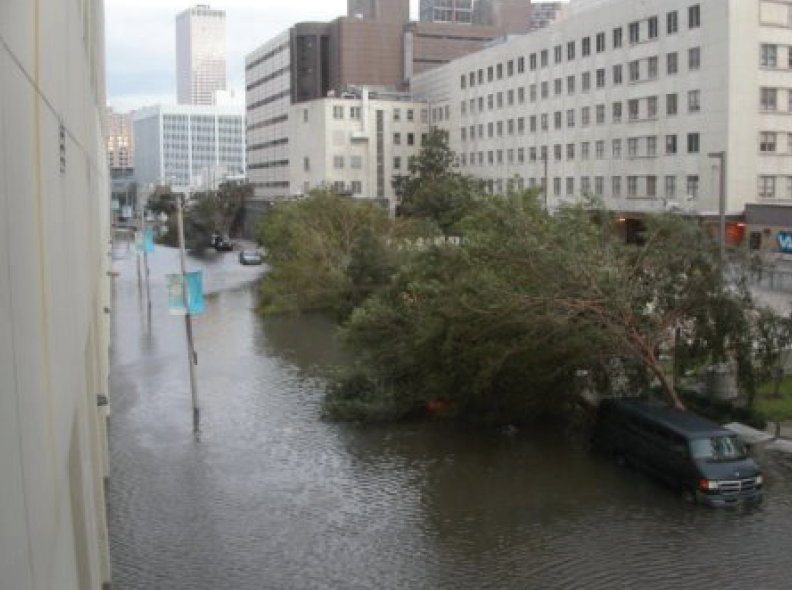
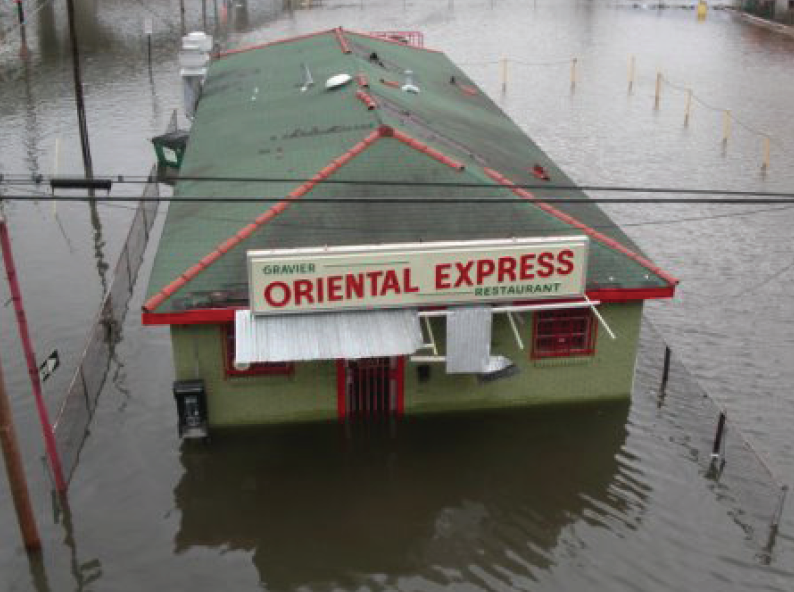

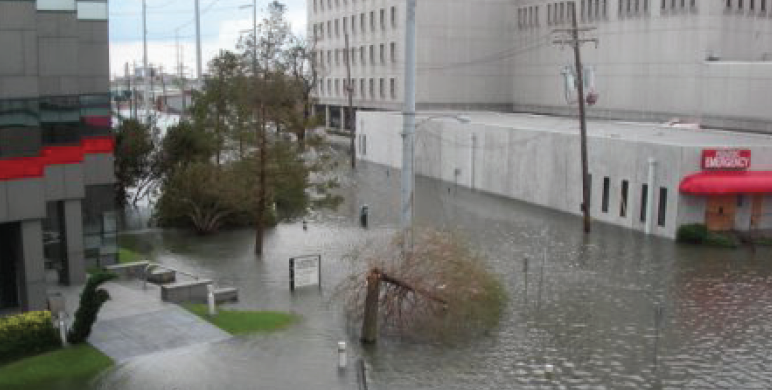
Figure 1. The New Orleans Veterans Administration Hospital (top); a local dive frequented by LSU and Tulane residents (second from top); Tulane Medical Center (third from top); LSU Eye Center and Research building (bottom).
Others were not so fortunate. In the city, the New Orleans Veterans Administration and Charity Hospital rotations were shut down due to major flooding. I received word that my fellow residents, Henry Alexander Leder, MD; Pedro Rivera, MD; and Wendy Donahue, MD, who covered Charity Hospital, were stuck there. They had no electricity and limited resources, yet they valiantly kept caring for patients and helping them to evacuate by helicopter and boat. I can only imagine how traumatic this experience must have been. Total chaos ran amok in the city. With the breakdown of infrastructure, it was martial law: Every man for himself; survival of the fittest.
A week after the storm, New Orleans was still shut down, and the military was trying to secure the city. Civilians were not allowed back in. One day, the second-year resident rotating with me in Houma, Adham al Hariri, MD, approached me with a look of desperation on his face. He didn’t have a car, and he asked me if he could borrow mine to go into New Orleans to retrieve his passport and other personal documents at his home in the Garden District. I told him that the city was shut down, but he insisted.
I finally acquiesced, but I told him that I wasn’t comfortable letting him go alone; I would go with him. Unarmed, we packed a few things, and I gave my wife and 1-year-old daughter a kiss. I prayed to God for safety as we ventured toward the city.
When we got to the outskirts, we encountered armed military personnel at multiple checkpoints. Luckily (or maybe unluckily), we had our scrubs and LSU badges on, so they let us pass, thinking we were authorized medical personnel. Driving through, it was like a scene out of a postapocalyptic movie set: The roads were covered in mud mixed with garbage and debris. For all intents and purposes, there were no discernable roads or intersections. Power lines and broken street lights were strewn like obstacles in a maze; it was disorienting.
With no power and no street signs, it was difficult to navigate, but when a caravan of military Humvees drove past us, we followed them to Adham’s house, with many of the surrounding neighborhood streets and homes still underwater. When we approached his house, he got out, stripped down, and tied a large garbage bag over each of his legs, covering up to his thighs. Adham began wading through the stagnant, fecal water toward his house, which was at the end of a long street.
I lost sight of Adham as he schlepped away. He is a suave and refined-looking guy, but, that day, I learned that he’s also a pretty tough dude. I, on the other hand, am a chicken. As I waited, I looked around and saw an empty school across the street with broken windows. There was nothing, nobody—only complete silence, save for the sound of my car engine idling.
In that moment, I realized that anyone could sneak up on me, shoot me, take my car, and no one would know. Watching TV shows now like The Walking Dead vividly reminds me of that moment and the eerie and unsettling feelings I will never forget. Finally, Adham made it back with his papers, and we hightailed it back to Houma safely.
NOW WHAT?
Eventually, New Orleans was reopened to the public, and I and the other residents were able to get together for our weekly didactic lectures. We traded notes on the different rotations: which ones were good and which were not. The New Orleans–based rotations were still shut down, so new rotations were created in Lafayette, 1.5 hours west, and Bogalusa, 1 hour north. Right after the storm, some displaced residents even went as far as Shreveport and Alexandria to maintain some semblance of a rotation, but much of the experience was limited, and surgery was nonexistent.
Collectively, we bemoaned our plight. Surgery was sparse, and understandably so. More than half the population had fled, which meant there were fewer patients for us to treat. It was a stressful and anxiety-provoking time. Some residents tried to leave the program, but this was discouraged. My wife was in an allergy, asthma, and immunology fellowship at Tulane. She was displaced to the Ochsner Clinic Foundation in nearby Metairie, and her program was essentially unaffected. I didn’t want to leave my family to go to another program, and I probably would not have left even if I had the choice.
So we were stuck with some of these new, improvised rotations, some of which were essentially observerships without any surgery. As a rising third-year resident, I felt I was just getting warmed up. With more than half of the population gone, and with the new and unproductive rotations, I wondered how any of us would reach the surgical minimums required for us to graduate.
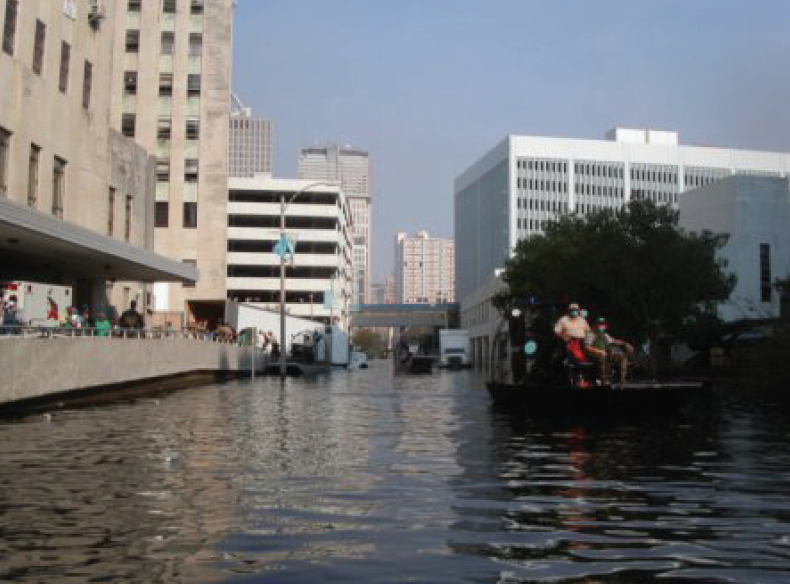
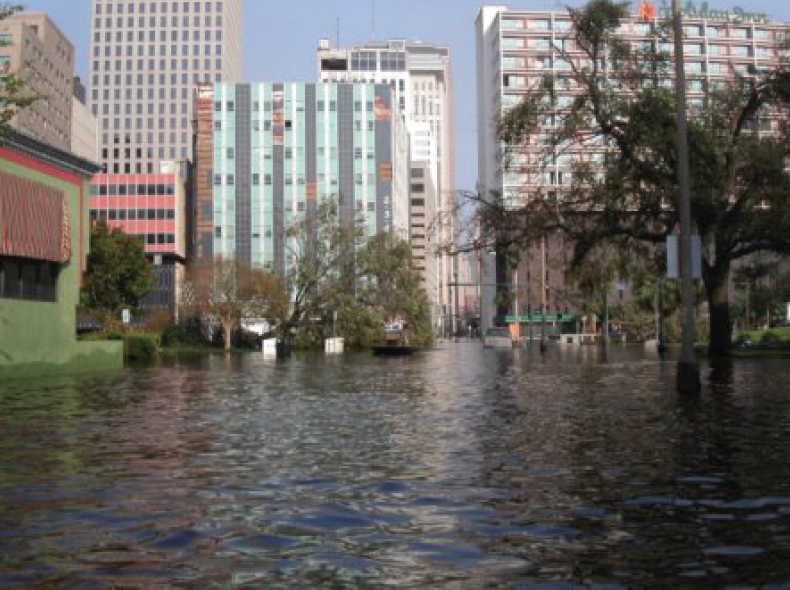

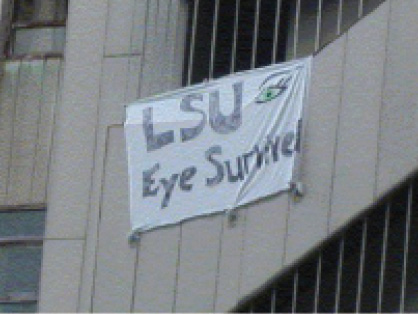
Figure 2. Charity Hospital (top); the rear of the New Orleans Veterans Administration Hospital (second from top); another nearby building (third from top); a banner hanging from Charity Hospital.
The residents currently on the Lafayette and Bogalusa rotations worked tirelessly to make the rotations better, but there still was no surgery. I must have picked the short straw because our residency program director, Ira B. Fuller, MD, chose me to go to Lafayette. I was determined to do everything I could to make the most of the rotation.
Dr. Fuller allowed me to recruit an excellent co-resident and good friend, Viet N. Bui, MD, to join me in Lafayette. It had been decades since any ophthalmology resident did a case at the University Medical Center (UMC) in Lafayette, and at that time, no one was doing eye cases there.
We stayed at an apartment provided by LSU and worked feverishly to make the rotation worth something. Viet and I met with the hospital administrators, including the CEO of the hospital, and explained to them our needs. With their support, and with assistance from LSU, Viet and I were allowed to buy equipment. We picked surgical instruments out of a catalog and met with a local surgical sales representative to buy a new phacoemulsification machine.
Although the UMC did not have an eye clinic, the center was an early adopter of telemedicine. We took full advantage of this resource and probably analyzed several hundred diabetic retinal scans to try to identify any patient who might need care. We looked for diabetic retinopathy, and, if the view to the fundus was limited, we brought those patients in to be evaluated for possible cataracts. We also picked up the Yellow Pages and cold-called every eye clinic in the area, informing them that we had a free eye clinic where they could send their indigent patients. So, after we spent the first 3 of the 6 weeks of our rotation building an infrastructure with our blood, sweat, and tears, Viet and I proudly (and anxiously) performed the first eye surgeries in decades at the UMC.
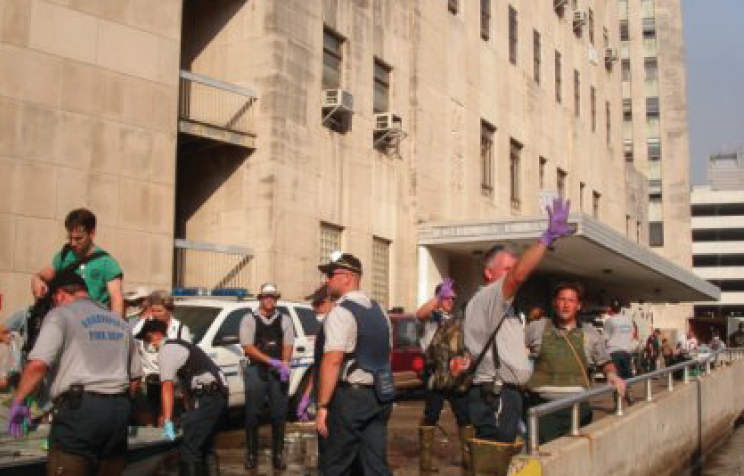
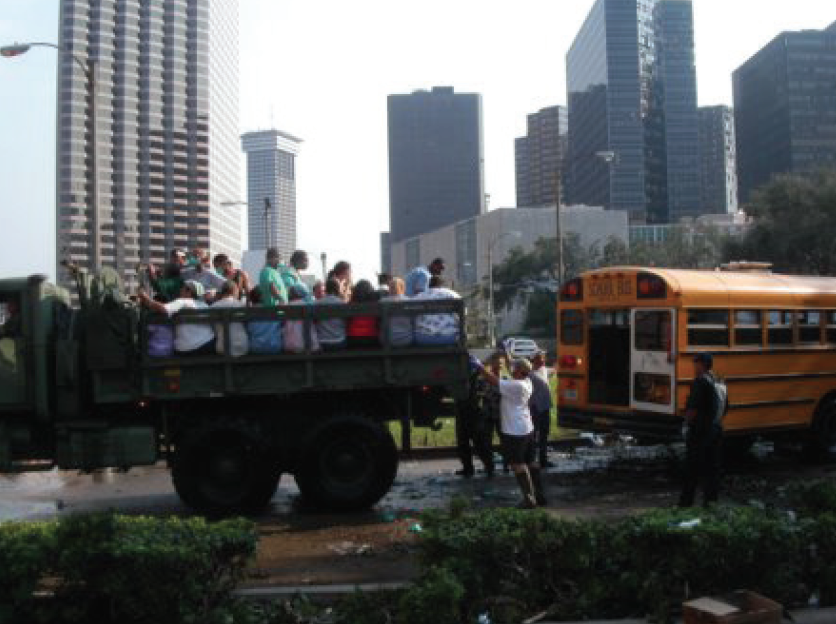
Figure 3. Evaculation and relief efforts in New Orleans.
At that time, flip phones were the norm, and YouTube was a figment of someone’s imagination, so we depended on watching DVDs to study and hone our skills. We devoured the brand-new book by David F. Chang, MD, Phaco Chop: Mastering Techniques, Optimizing Technology, and Avoiding Complications, like divinity scholars dissecting the Bible.
In our barren apartment, we had nothing but our duffel bags, air mattresses, and a laptop to watch surgical DVDs. We stayed up nights watching videos and sharing notes, surgical techniques, and pearls we picked up along the way. We were fortunate to avoid any major surgical complications, and together we performed more than 30 phaco cataract surgeries in those last 3 weeks.
When I look back, it was a time of tremendous growth for both of us as surgeons. We successfully converted from block to topical anesthesia and from divide-and-conquer to chopping techniques. We had to balance caution with boldness because we knew time and opportunities were scarce to advance our skills and help our patients. These became some of my most precious memories as a resident, and I’m still amazed that we were able to accomplish what we did. To this day, UMC is a solid surgical rotation.
I need to give a shout out to the residents who came before us in Lafayette. They busted their butts to set up clinic space and helped transfer equipment from Charity Hospital in order to get things started. We wouldn’t have gotten far without their efforts. And I would be remiss not to acknowledge and thank Paul J. Azar Jr, MD, for being the impetus for the Lafayette rotation. He and the doctors in his private practice group in Lafayette took us in and staffed our cases. Without him, none of what I just described would have been possible.
A common thread throughout my post-Katrina experiences was the support of many people like Dr. Azar and local private practice ophthalmologist and LSU alumnus Stephen Capps, MD, who sacrificed their time and energy to help save our program. I am forever grateful to them.
HEALING
In November 2017, I returned to New Orleans for the AAO Annual Meeting. I was amazed and happy to see how the city has recovered. I love the city, the people, the culture, and the unique and delectable cuisine. It is a one-of-a-kind place, and I am glad to have trained there.
I attended an LSU alumni reception at Mother’s Restaurant and had the chance to catch up with old friends, including some who are now LSU attendings themselves. During the reception, the Katrina residents gathered together in a circle and talked about our time back then. The saying, “What doesn’t kill you makes you stronger,” resonates with us. I believe the experience helped us to grow as human beings. It made us tougher and more resilient. We had to work together to resurrect our program. It was the collective efforts of attendings, residents, and community ophthalmologists that made it possible.
When our little circle disbanded, I looked around the room and saw that it was full of revelry, smiles, laughter, and warm hugs. What a contrast this was to what we went through in the aftermath of Katrina. It warms my heart to see the program and its residents thriving today. I suppose time truly does heal wounds.

